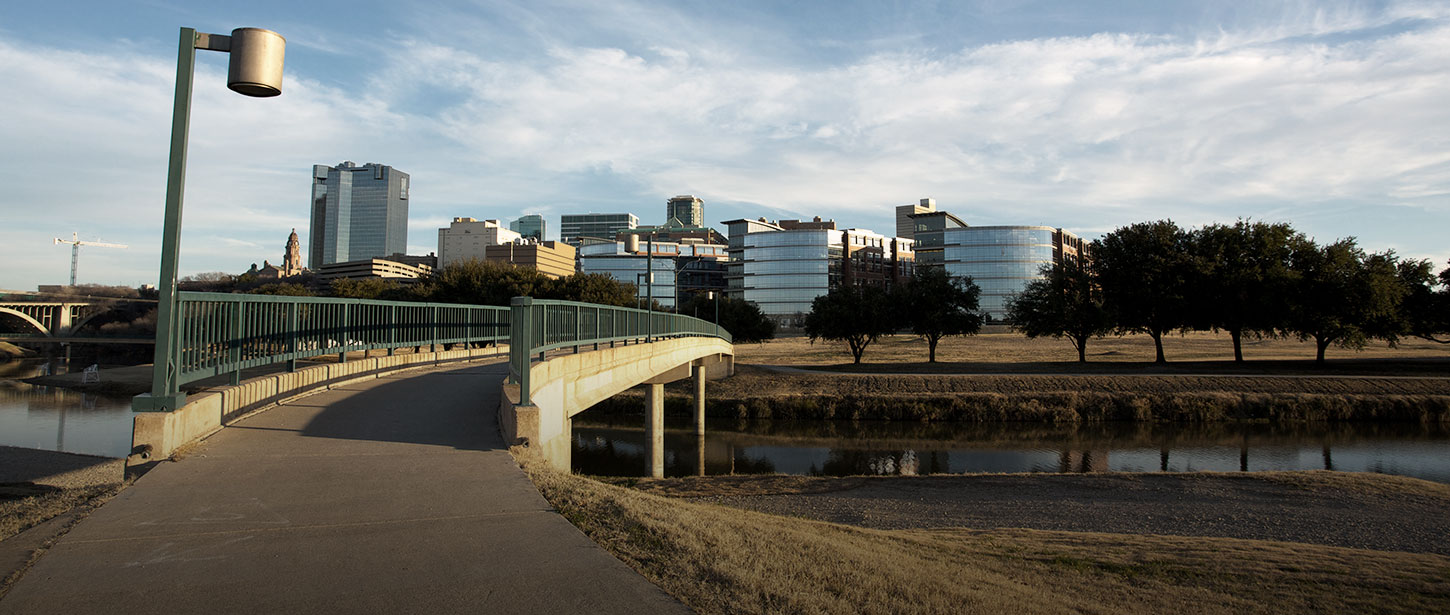Many people are under the impression that all persons who are blind live in total darkness. Blindness encompasses a wide range of vision loss, from the legally blind person with 20/200 acuity or severely restricted fields, to the totally blind, with many varying degrees of blindness in between. General terms used to describe vision loss are "low vision," "visually impaired," or having a "vision disability."
Depending on the particular eye disease, blindness affects an individual's vision in a variety of ways. Below is a photo of the Fort Worth skyline. The first frame depicts the view of someone with normal vision, and the rest depict how this same view would look to someone with a visual impairment.
Currently Simulating: No Visual Impairment






Swipe left or right to view a simulation of common visual impairment conditions

None
Macular
Degeneration
Diabetic
Retinopathy
Glaucoma
Cataracts
Blindness
Macular Degeneration
Macular Degeneration causes central vision and color perception loss, distorted or fuzzy vision, or difficulty with reading or facial recognition. This is the most common cause of vision loss.
Diabetic Retinopathy
Symptoms of Diabetic Retinopathy are patches of vision loss (floaters or blind spots), cloudy vision, glare sensitivity, and decreased night or low-light vision.
Glaucoma
Glaucoma causes side vision loss, tunnel vision, blurred central vision, and seeing colored rings on lights. Glaucoma becomes more common among people over the age of 40.
Cataracts
Cataracts creates a blurry hazy view with multiple levels of images. Other symptoms include glare sensitivity, color perception loss, and decreased night or low-light vision. Cataracts become more often among adults over the age of 55.
Blindness
Blindness means having complete loss of useful vision. A light or dark gray haze may still be visible, few blind people experience complete and total darkness.
Donate Online, by Mail, or by Phone
- Lighthouse for the Blind of Fort Worth
- Attn: Community Development
- 912 W. Broadway Fort Worth, Texas 76104
You can also call the Community Development office at 817.332.3341 and make a donation over the telephone with a MasterCard, VISA, and American Express .
ONLINE DONATION

